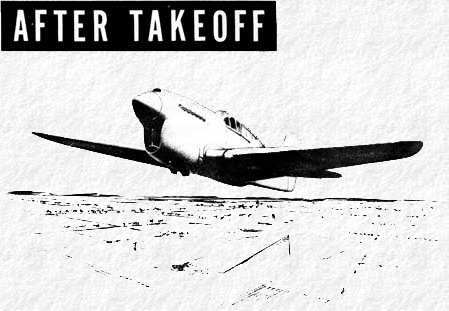|
1.
After takeoff reduce the throttle and rpm settings to 35"
Hg. (33" Hg, for Grade 91) and 2500 rpm. Climb straight
ahead at 150 mph IAS until you reach at least 300 feet
altitude.
2. Adjust trim tabs so
that there is little pressure on the controls.
3. Make your turn out of
traffic and continue climbing at 150 to 160 mph IAS to
the desired altitude.
4. S constantly while
climbing. Keep a sharp lookout for other aircraft.
5. Check functioning of
engine instruments frequently. If there is anything
wrong, return to the field and land.
6. Coolant and oil
temperatures generally run higher than normal while
climbing. If either temperature persists in running
abnormally high, level off until it drops.
|

7. When the desired
altitude is reached, level off, and reduce throttle to
30" Hg. (28" Hg. for Grade 91) and approximately 2300 rpm
for cruising.
8. Adjust coolant
shutters and re-trim the airplane so that it flies
straight ahead with your hands off the controls.
9. Keep checking
instruments. Engine instruments and fuel gages should be
checked at least once every 5 minutes.
|



